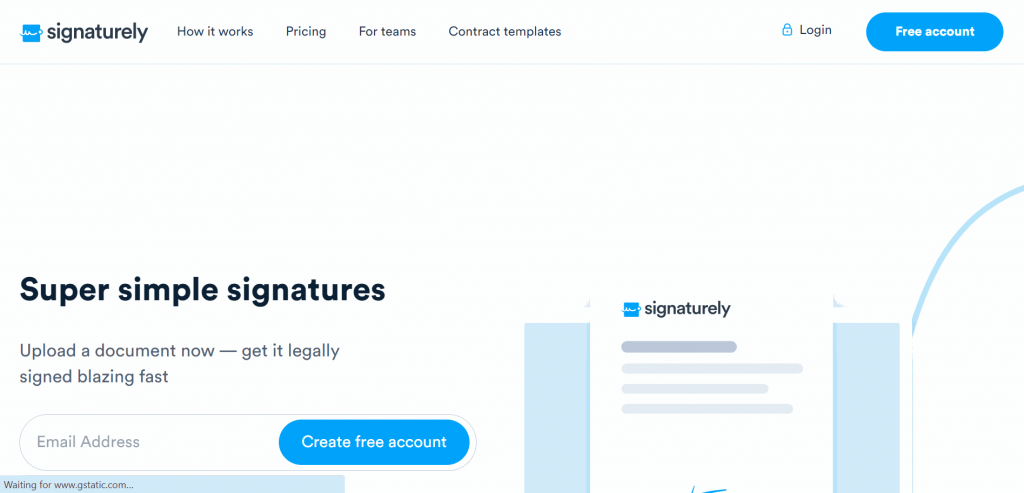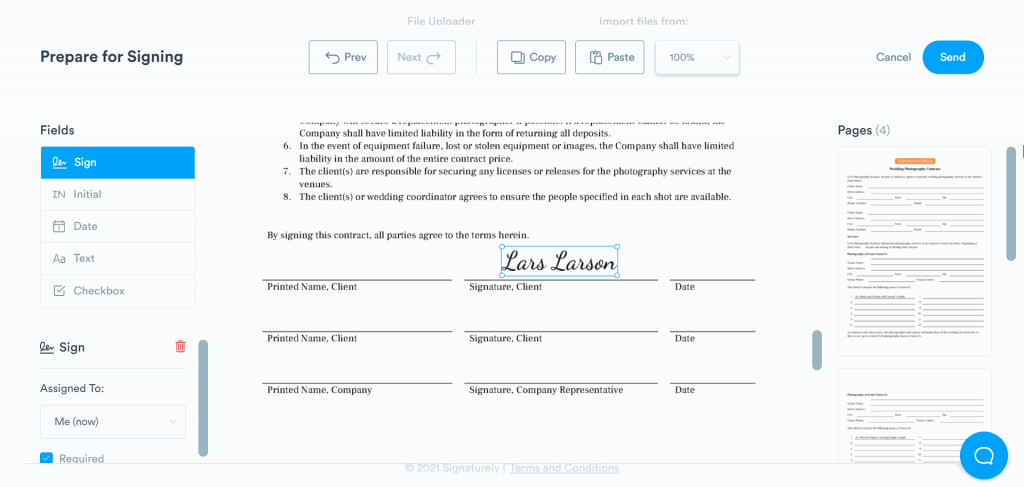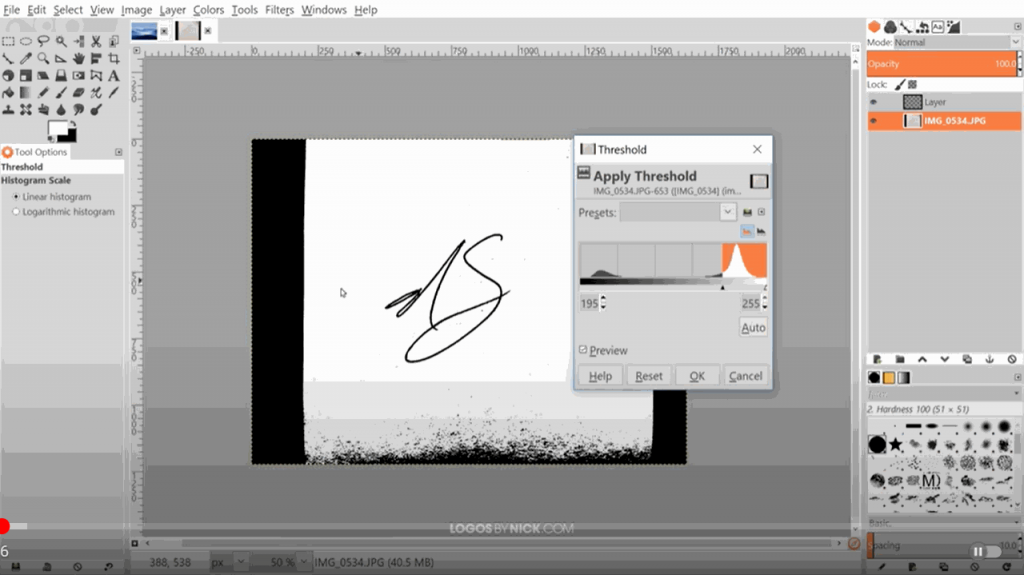Documents, contracts, and agreements are signed digitally in today’s business landscape. Sometimes these are PDFs or Word documents; other times, they’re simply images. Adding an electronic signature might seem a little harder for the latter. However, it’s not impossible. In this article, we’ll cover 5 tools you can use for signing an image. These include:
- Signaturely
- Photoshop
- Gimp
- Paint
- Illustrator
After reading the contents of this guide, you’ll know how to sign any image online easily.
Ready to start? Let’s dive in.
Use a Digital Signature Software
The easiest way to sign an image is to use digital signature software. These are, generally speaking, cloud-based applications specifically designed to add electronic signatures to digital documents. Using these tools, you can significantly optimize your document workflows.
Advantages of using digital signature software to sign an image
When signing an image, using digital signature software provides many benefits. Below, you’ll find a list of pros:
- Saves time
- Can reduce costs/expenses
- Is easily accessible by all contract parties
- Comes with real-time status updates
- Increases document security
Disadvantages of using digital signature software to sign an image
This article wouldn’t be impartial if we didn’t also cover the disadvantages. The bullet points below will cover the cons of using digital signature software for signing an image:
- It can potentially cost more
- Some have limited storage
- The quality of security varies
Tool 1: How to sign an image with Signaturely

One of the best digital signature software options is Signaturely. With Signaturely, you can easily add an electronic signature to documents, contracts, and agreements. It doesn’t matter if you’re signing an image, PDF, or Word document; Signaturely has you covered.
Signing an image with Signaturely is simple; follow these steps:
Start by going to Signaturely.com and signing in to your account — it’s free. Then, select “Sign” on the left sidebar. You’ll then have to select “Only Me,” “Me & Others,” or “Only Others.” Your choice will depend on who needs to sign your image.
Once you’ve selected the right option, you’ll be sent to a new page. On this page, you’ll be able to attach the image at the bottom by selecting “Upload File.” Once done, you should also give your document a title at the top.
Finally, if your image requires the signatures of multiple contract parties, add any email addresses of others who need to sign at the bottom. After doing that, choose “Fill Out & Sign.”
The next page is a document editor, where you’ll add your digital signature. If you don’t have one, you’ll be able to create one. You’ll be able to add other information to the image, like names and dates. You can then finish up by hitting “Send.”

Pros
- Free option available
- Cheap and affordable premium options
- Easy to use
- Cloud-based
- 100% legally binding signatures
- Fantastic security measures
- Easily accessible audit log
Cons
- The free option is limited
Use a Photo Editing Program
Another option you could use to sign an image is a photo editing program. These are applications that allow you to alter images digitally. For instance, you can change the size of the image, the contrast, the brightness, and the file format.
Photo editing programs can insert a digital signature into the picture to sign an image. This particular strategy is more tedious and time-consuming than the other methods in this article. You could save time by simply using digital signature software.
Advantages of using a photo editing program to sign an image
When it comes to using a photo editing program to sign an image, there are some benefits:
- Allows you to add a digital signature to any image
- Some photo editing programs are free
Disadvantages of using a photo editing program to sign an image
There are no doubt some negatives that come along with the use of photo editing programs to sign an image. The disadvantages are listed below:
- Photo editing programs can be expensive
- They have a steep technical learning curve
- They can be hard to use
- This process is long and drawn out
- Security is an issue
- Signatures added aren’t always legally binding
Tool 2: How to sign an image with Photoshop
Adobe Photoshop is one of the most popular premium photo editing programs available. It allows you to create, edit, and alter images; with this application, you can sign an image.
The steps involved in signing an image with Photoshop are complex; it involves two processes. First, you must create a brush preset based on a scanned image of your handwritten signature. Then, you’ll add it to the image you want to sign.
Here are the steps required to sign an image with Photoshop::
Begin by writing your signature on a plain white piece of paper. Use a fine-point permanent marker; black works best. Then scan or take a high-quality image of the hand-drawn signature. You’ll use it as a digital signature, so save it as a JPEG on your computer.
Once it’s saved to your computer as a digital image, open it in Photoshop. Crop as much of the white background as you can. Then you’ll need to use the magic wand tool to select the written signature. After doing so, hit Edit > Define Brush Preset, and give it a name.
You’ve created a new brush that allows you to stamp your signature on images with one click. You’ll be able to use this for any images and documents you need to sign in the future.
The next step is to open the image you want to sign in Photoshop. Then, use the new brush to add your signature to the image. Alter and adjust the brush size to fit the signature to the image appropriately.

Pros
- High image quality
- Easy to repeat once you’ve done it once
Cons
- Can’t create a digital signature with the program
- Getting access to Photoshop is expensive
- Adding a signature to an image is overly complicated
- Steep learning curve
Tool 3: How to sign an image with GIMP
GIMP is a free, open-source photo editing software that can help you add signatures to images. It’s considered the closest thing to a free version of Photoshop.
Like Photoshop, signing an image with GIMP is a little complicated; it requires you to scan a real hand-drawn signature. The step-by-step details are outlined below:
Draw your signature with a fine-point black Sharpie on white paper. Either scan or snap a photo of this hand-drawn signature; ensure it’s high-quality. Save it as a JPEG file.
The next step is opening the image in GIMP, then selecting Colors > Threshold. You’ll then be able to adjust a slider. Make the signature as black as possible and the background all white. You’re essentially tweaking the contrast and brightness here.
After that, right-click the image, and select “Add Alpha Channel.” This will add a transparent background layer.
Then, use the Select by Color tool to delete the white background in the original layer. Get rid of any remaining white background with the Eraser tool. You’ll now be left with your black signature and a transparent background. Save your newly created digital signature.
The final step is to open the image you want to sign and add and overlay your digital signature. Tweak its size to fit the document.

Pros
- Higher image quality
- Easily repeatable process
- GIMP is a free program
Cons
- Time-consuming
- There’s no feature to add a simple signature
- Questionable signature quality
- It takes a while to get the hang of it
Tool 4: How to sign an image with Paint
Microsoft Paint is the default image editor that comes on every Windows computer. It’s a simple program that allows you to alter images. You can change their color and size, among other things. Compared to GIMP and Photoshop, it’s a little underpowered.
Like with GIMP and Photoshop, you’ll first need to create a digital signature to sign an image. Follow these steps to do so:
Get a piece of plain white paper, and write a nice signature with a fine-point black Sharpie. Get a high-quality digital image of this by either scanning or taking an image. Save it as a JPEG file.
Once that’s done, open the image in Paint. Crop out the excessive white background, then use the selection tool to “select all” and copy it.
Then, open the image you want to sign in a new Paint window. Paste your digital signature into the image, and while it’s still selected, change the selection tool settings to “Transparent selection.” Finish off by resizing and placing the digital signature so it fits appropriately.

Pros
- Microsoft Paint is a free program.
- Relatively easy to do again after you’ve done it once
Cons
- The signature can be low-quality
- Unnecessarily long process
Tool 5: How to sign an image with Illustrator
Adobe Illustrator is a vector graphics editor that helps you create and alter vector images. These unique images remain smooth and not pixelated when zoomed in. It’s an ideal photo editing program to sign an image and a companion app to Adobe Photoshop.
Using Adobe Illustrator to sign an image is, like Photoshop, somewhat technical. You’ll first need to create a vector image of your digital signature before you sign your image. These are the steps you have to take:
Write your signature with a fine-point Sharpie on plain white paper. Then, take a photo or scan it. Ensure you get a high-quality digital image — JPEG, preferably.
The next step is to open the image in Adobe Illustrator. Crop the excessive white background so only the signature and a small bit of the border remain.
Then, select Object > Live Trace > Make. Use the pen tool set to .25 stroke to trace your signature carefully. Once done, change the stroke to mimic the weight of the drawn signature. Then save the newly created digital signature as a vector image.
The final step is to open the image you want to sign and overlay your digital signature vector image. Adjust its size and placement to fit the document.

Pros
- Amazing vector image quality
- Easy to repeat once
Cons
- Technical, complex process
- Initially, it takes a long time to complete
- Adobe Illustrator is an expensive photo editing program
Frequently Asked Questions on How to Sign an Image
Signing an image means you’re adding a digital signature to it. Digital signatures are as legally valid as handwritten signatures. Digitally signing an image might involve using a touchscreen, drawing with the mouse, or overlaying a vector graphic.
An image should be signed if you need to send it to others digitally, such as by email. The image may be a contract or agreement that requires the signatures of multiple contract parties, including your own. It’s faster to process the document online than with paper and faxing.
Yes, you can sign an image for free. Many options on this list don’t cost anything. Signaturely has a free plan; GIMP and Microsoft Paint are free applications.
The best method to sign an image is to use digital signature software. These are applications solely created to sign documents over the internet, where they can be processed and sent quickly.
The easiest way to sign an image is by using digital signature software designed to sign documents online. These tools can add a digital signature to an image much faster and effortlessly than other alternatives.
Conclusion
Businesses today need to be able to sign and process documents, contracts, and agreements quickly. The internet has made this possible. PDFs, Word documents, and even images are signed effortlessly.
This article covered 5 tools you can use to sign an image. These included:
- Digital signature software
- Photoshop
- GIMP
- Paint
- Illustrator
Want to uncomplicate things and sign images easily, effortlessly, and fast? Try Signaturely for free today.
